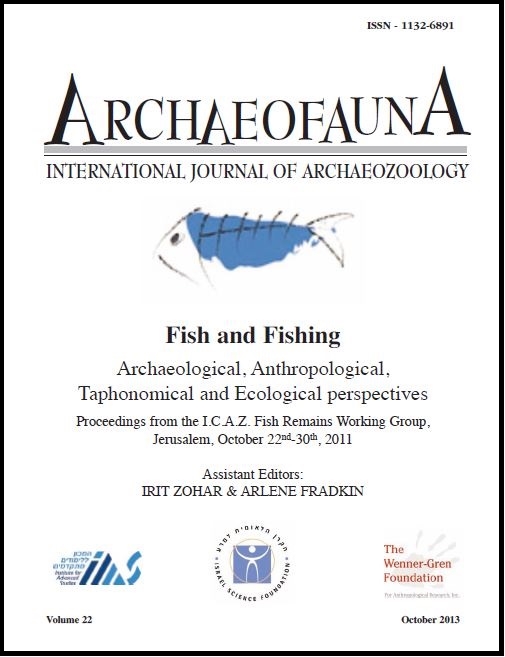Black Fish Bones in Waterlogged Deposits: The Case of the Neolithic Lake Settlement of Dispilio, Greece
Keywords:
Burning, Greece, Lacustrine sediments, Neolithic, Oxide staining, Diagenesis, Optical microscopy, SEM, EDXA, IR SpectroscopyAbstract
The identification of burnt bones in archaeological sites is important as it provides evidence of human-processing activities and fire-related episodes. Past zooarchaeological analyses of burnt fish and mammal bones were mostly based on macroscopic features, such as bone color and structure, and microscopic features, such as crystallinity. Such studies, however, have shown that black coloring of bones can be caused not only by burning, but also by natural mineral staining. Therefore, it is essential to develop analytical techniques for the identification of burnt bones. This paper presents preliminary results from an interdisciplinary study on the possible causes of the «black-colored bones» recovered at the Neolithic lakeside settlement of Dispilio, Greece (5500–3500 B.C.). The frequent occurrence of charcoal and burnt cultural remains in the lower layers of the deposit suggested that the first village was destroyed by fire, followed by a period of site abandonment. Nevertheless, although fish bones are often reddish/ black in color in archaeological deposits, macroscopic examination of these remains suggested that less than 6% were burnt and that their coloring was caused by waterlogged depositional conditions. These observations are of great significance in reassessing the nature of the so-called «destruction level». Selected fish bones were examined through Optical and Scanning Electron Microscopy (SEM), X-ray Microanalysis (EDXA), and Infrared Spectroscopy (IR). The alterations observed on fish bone histology, mineralogy, chemistry, and crystallinity due to diagenesis and/or possible burning are presented and their correlation to the archaeological context discussed.

